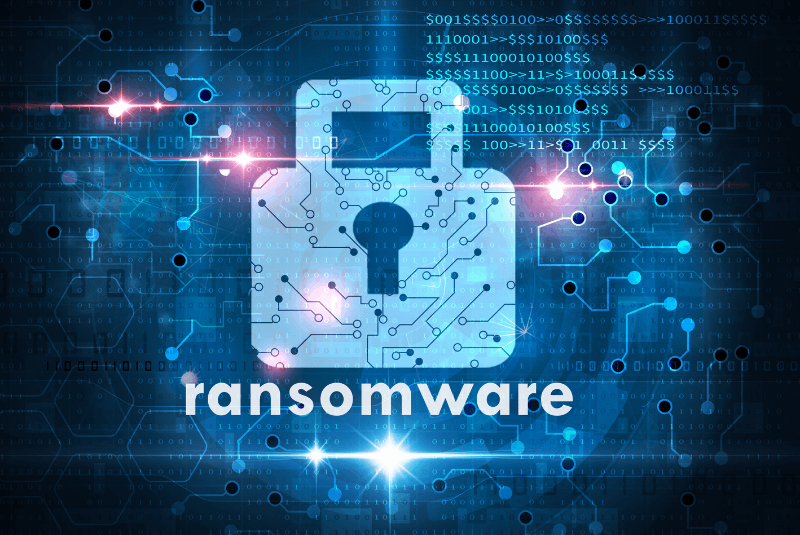Ransomware has progressively become a hassle for many devices around the realm and hasn’t displayed signs of reducing down its attacking spread. Fortunately, there are securities one can set up to lessen the risk of getting attacked by ransomware.
In the last two decades, data has traveled from the constraints of flashy glass buildings that hold all information at one place, into the homes of every person. We carry our work in our backpacks and our pockets. On-premise data or information has also made way for cloud computing to assist businesses to save time and money while solving problems at scale.
As per the Gartner study, by 2022-as productivity of digital business projects, 75% of enterprise spawned data will be created and processed out of the traditional cloud or centralized data center, which is a boost from less than today’s ten percent.
While this has definitely meant a giant leap for organizations that struggle to meet clients’ requirements immediately, it has also opened up the threat surface of a typical organization to malicious actors.
Loss of enterprise data could bring in trouble in the form of misuse proprietary information and expensive lawsuits.
The boosted attack surface means a bigger target for malware authors to go after. They have redoubled their efforts not merely in attacking cloud closets, but also endpoints where a multiple of end-users and knowledgeable workers keep working on sets of their data and assigned projects.
Unfortunately, in spite of their best efforts, existing anti-malware solutions cannot be relied upon to detect and stop all malware. The rapid-moving malware underground ensures that anti-malware vendors are always playing catch-up
While Ransomware can attack any computer, in most episodes, the infected computer is an end user’s workstation or laptop. Thus, any data stored on local disks, file shares, and mapped network drives are vulnerable.
Ransomware replaces original files with encrypted versions. Cloud storage often mirrors these changes, but lacks efficient bulk data restoration despite some offering file versioning.
Organizations are evolving from the (now) archaic notion of data in secure data centers to data “on-cloud” & data “on endpoints.” But, the evolution in thinking to consider the security ramifications of this data change has been slower than expected. There still seems to be a slow tactic to security in numerous industry verticals, especially considering that ransomware damages only might have cost the domain more than $8 billion in 2018.
Ransomware estimates 85% of all malware in the Healthcare sector, making it vertical with the highest incidents of ransomware attacks. With 750 events, and 536 with confirmed data disclosure in the 2018 year.
It seems that the healthcare industry should be working harder at staying secured!
Fighting back to eliminate Ransomware
You can be attacked to Ransomware in various forms- It can be by mistake downloaded if you visit compromised website that may look legitimate but has malware slinking on it, possibly in advertisements approaches. It could also be on the back of other malware, or in links and attachments in phishing or spam emails.
Prevention is the best approach to consider because once the Ransomware itself has entered your machine- it could be impossible to eliminate. As we know, there’s no single “Silver Bullet” to keep you 100% or wholly shielded from such threats. As IT professionals in Katy, we thoroughly analyze your concerns. We employ cutting-edge machine learning to detect and prevent unknown malware variants from causing harm.
Few key points to remember and which will be evident why Ransomware is going to stay and how you can protect it;
- Remain up to date with the security patches from your OS providers and any other apps running on your PC or smart devices. Turning on automatic update mode will make this hassle-free and keep you safe.
- Invest in anti-malware security from a reputable vendor proved to eradicate Ransomware. Trend Micro Security for your Mac, as well as your PC, offers robust protection against Ransomware by blocking emails, malicious websites, and files linked with the threats.
- Skip on opening emails or clicking on links or opening attachments linked with them. Trust no-one who transfers you that email documents out of the blue!
- Backing up at regular intervals won’t prevent infections, but it will ensure that you can restore your files if needed. The rule says: for daily backups, you should have three copies, in two different formats, with one off-site. Online sync storage is not enough. Have one copy backed up offline so the Ransomware can’t also attack it.
- Stay alert online. Hackers can target your contacts’ accounts, sending fake emails impersonating retailers, police, banks, etc., tricking you into downloading Ransomware.
Again, trust no-one! It’s a Reminder.
For more insights on Ransomware, visit our website or connect with our IT Services Experts of Houston today!

